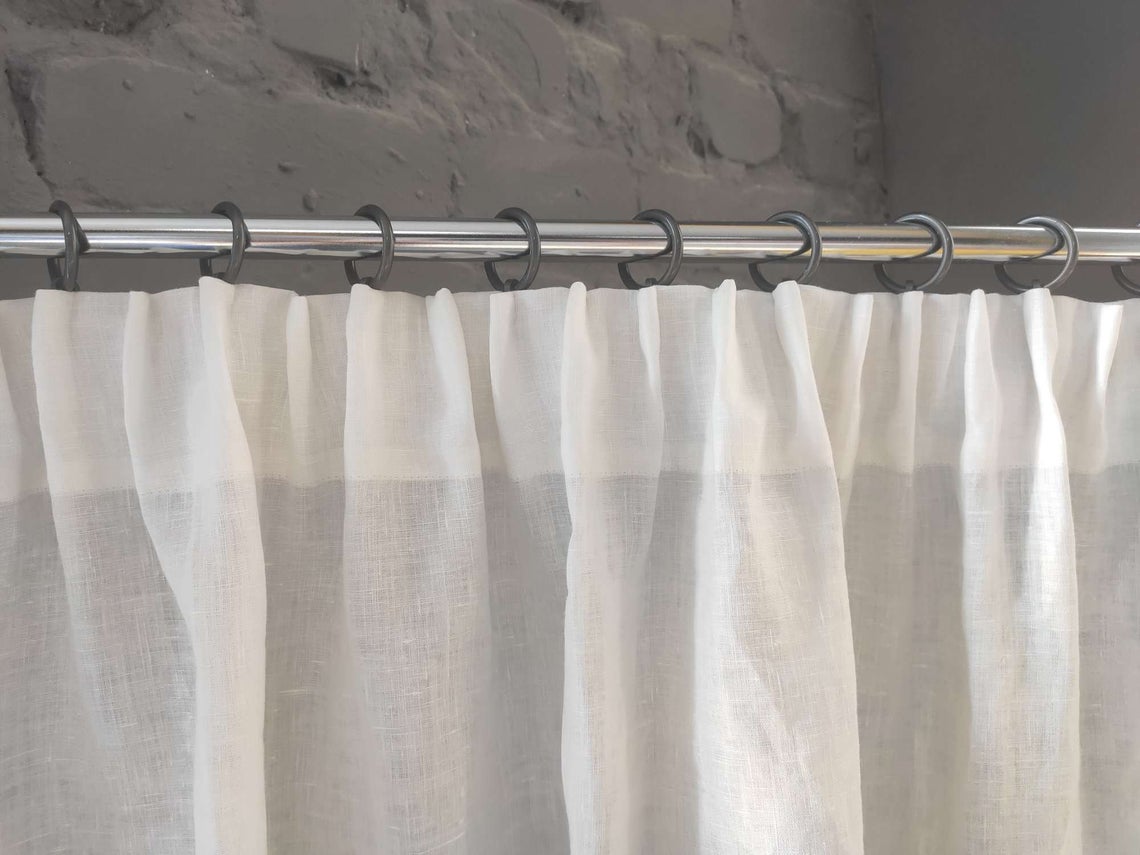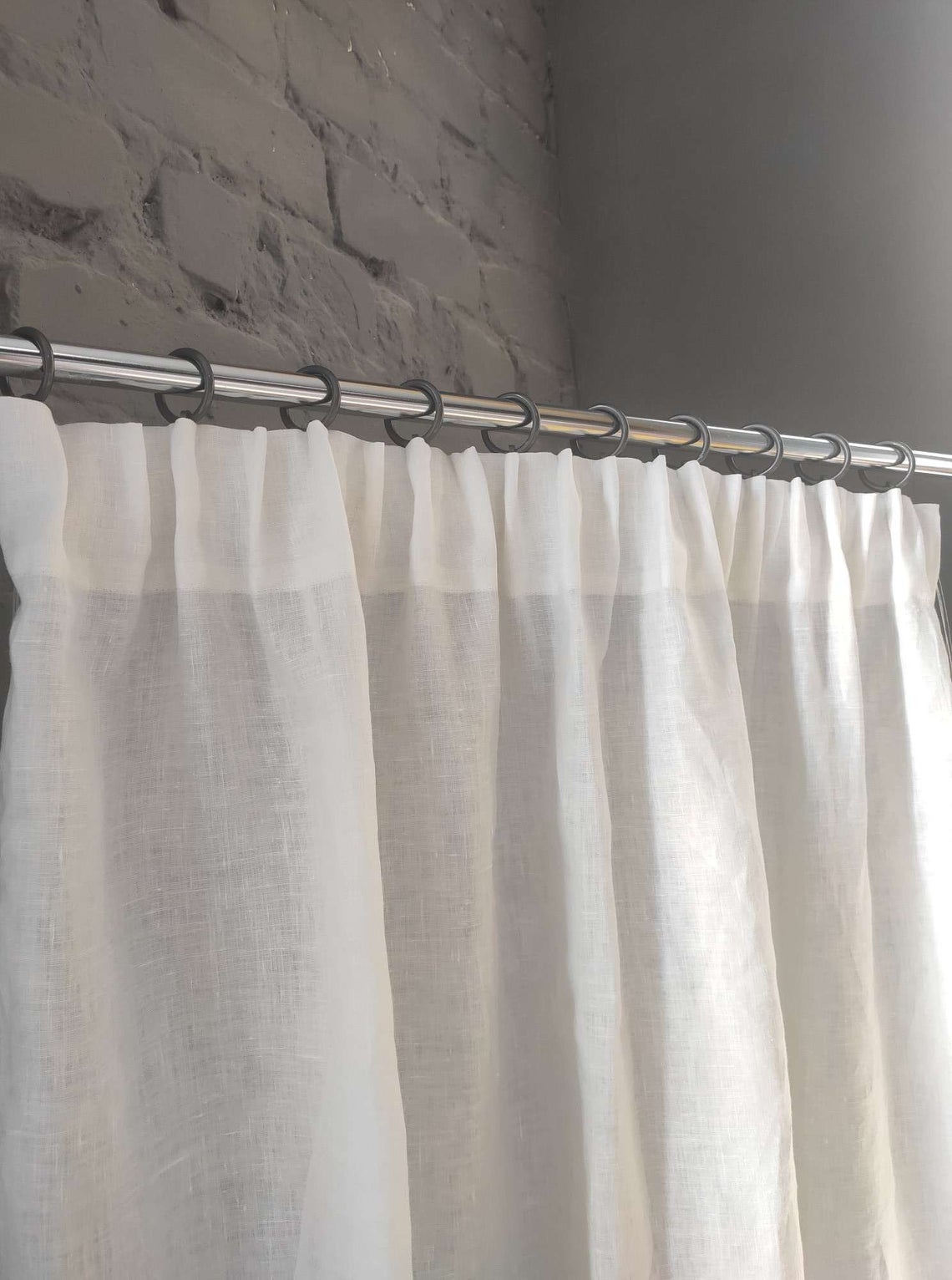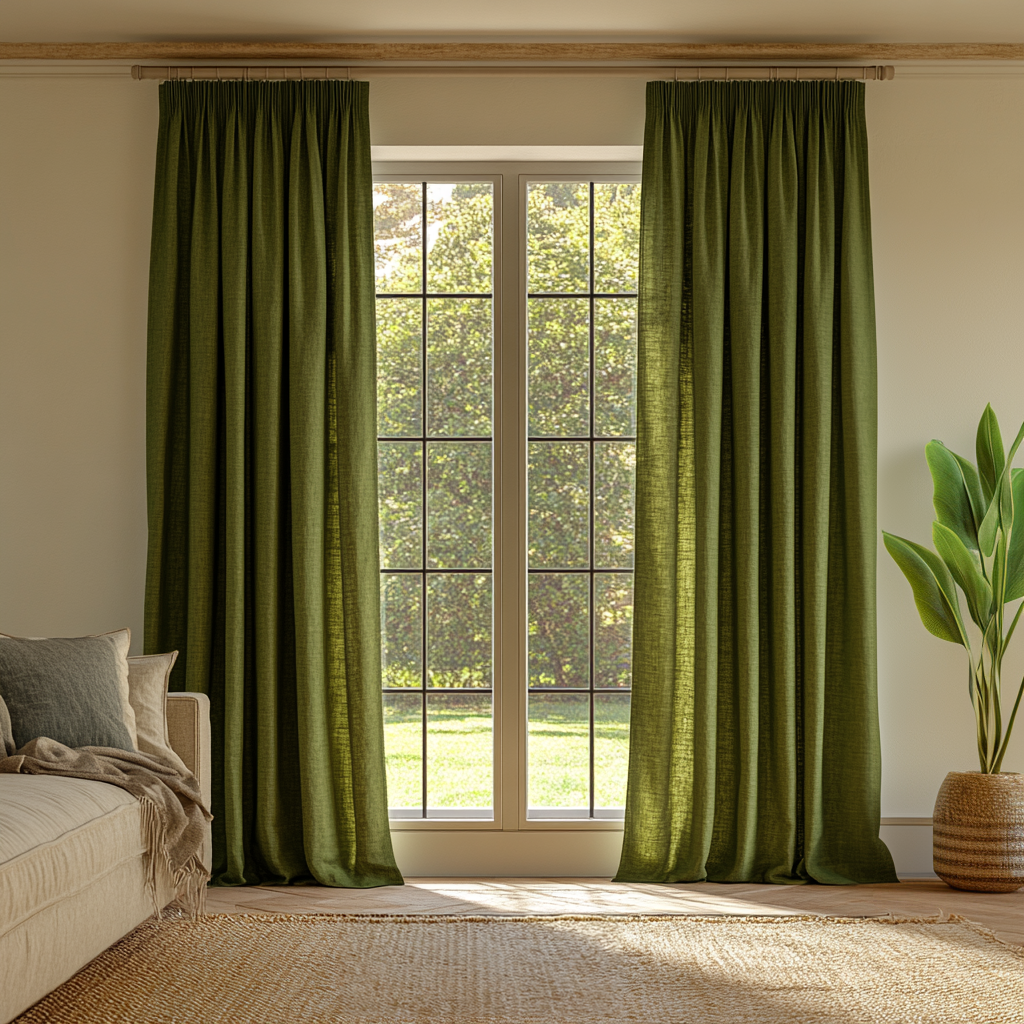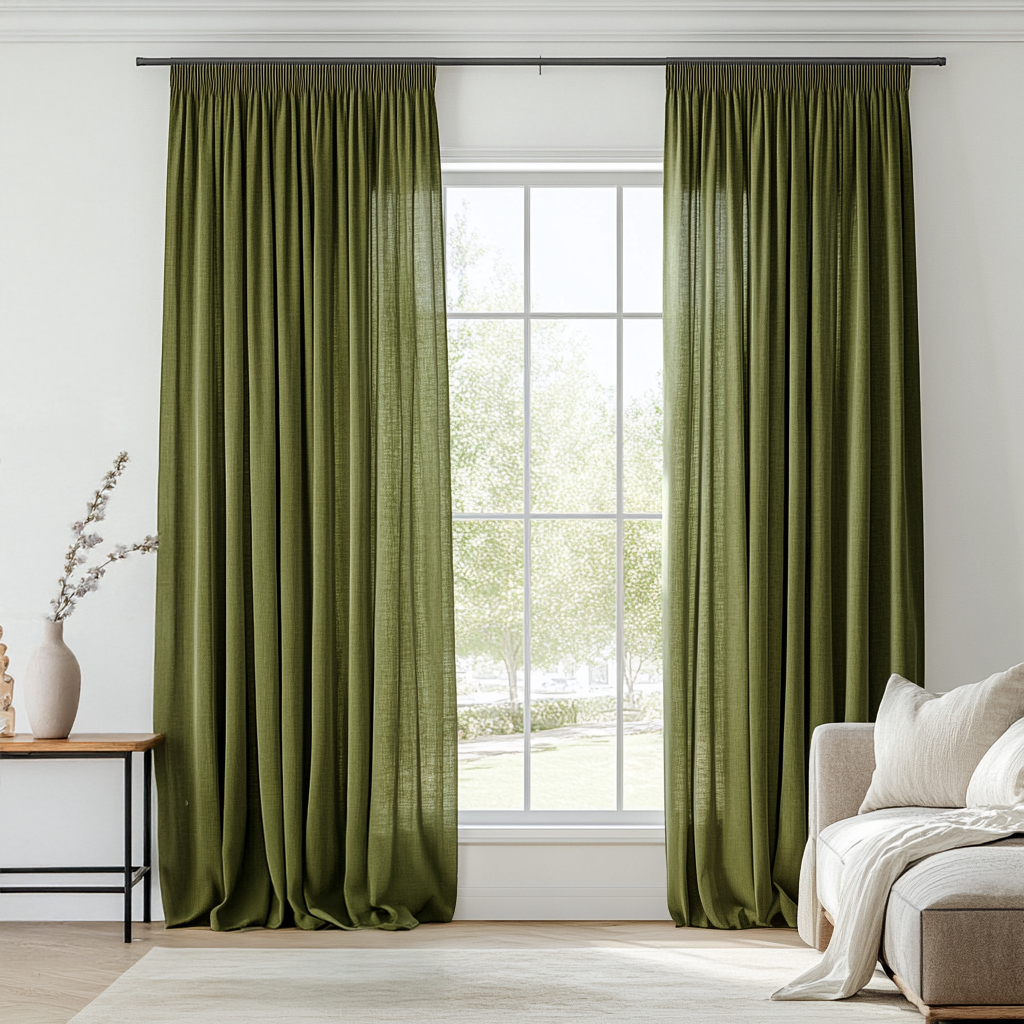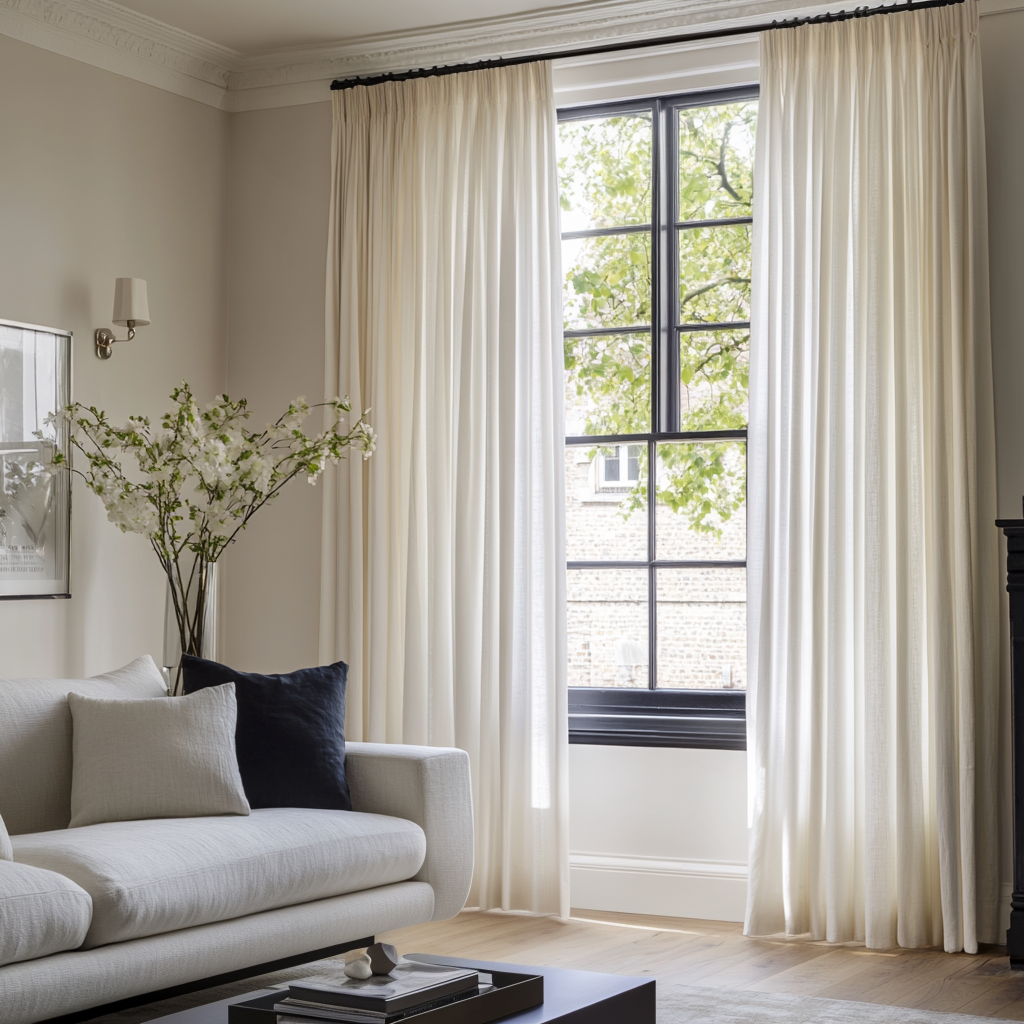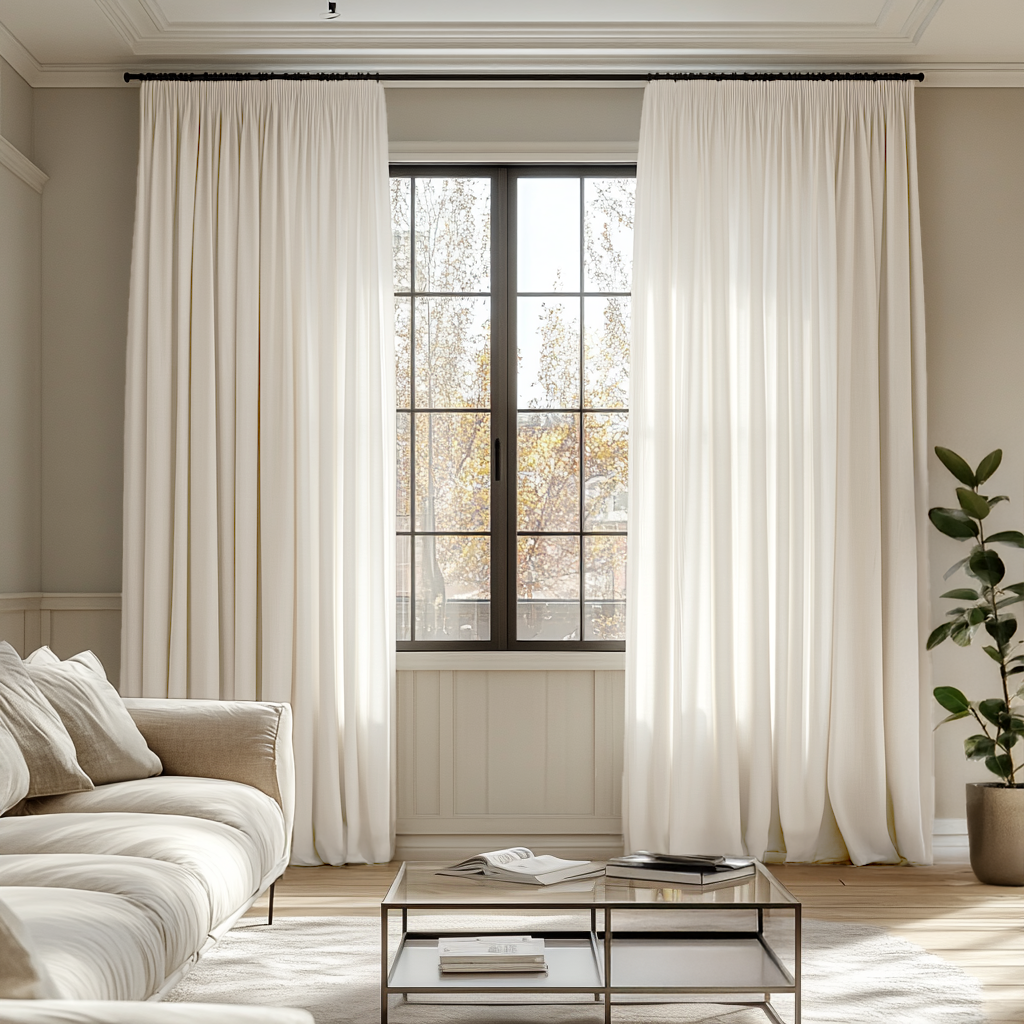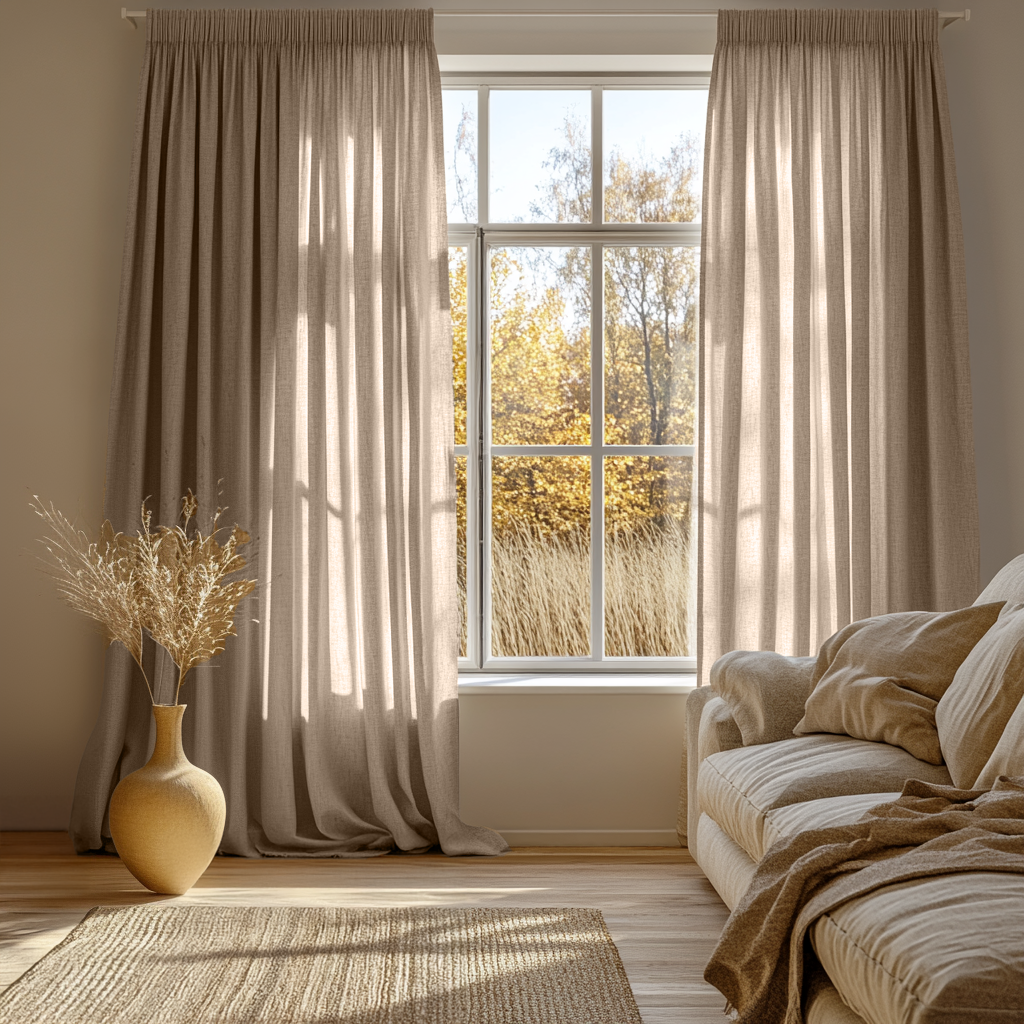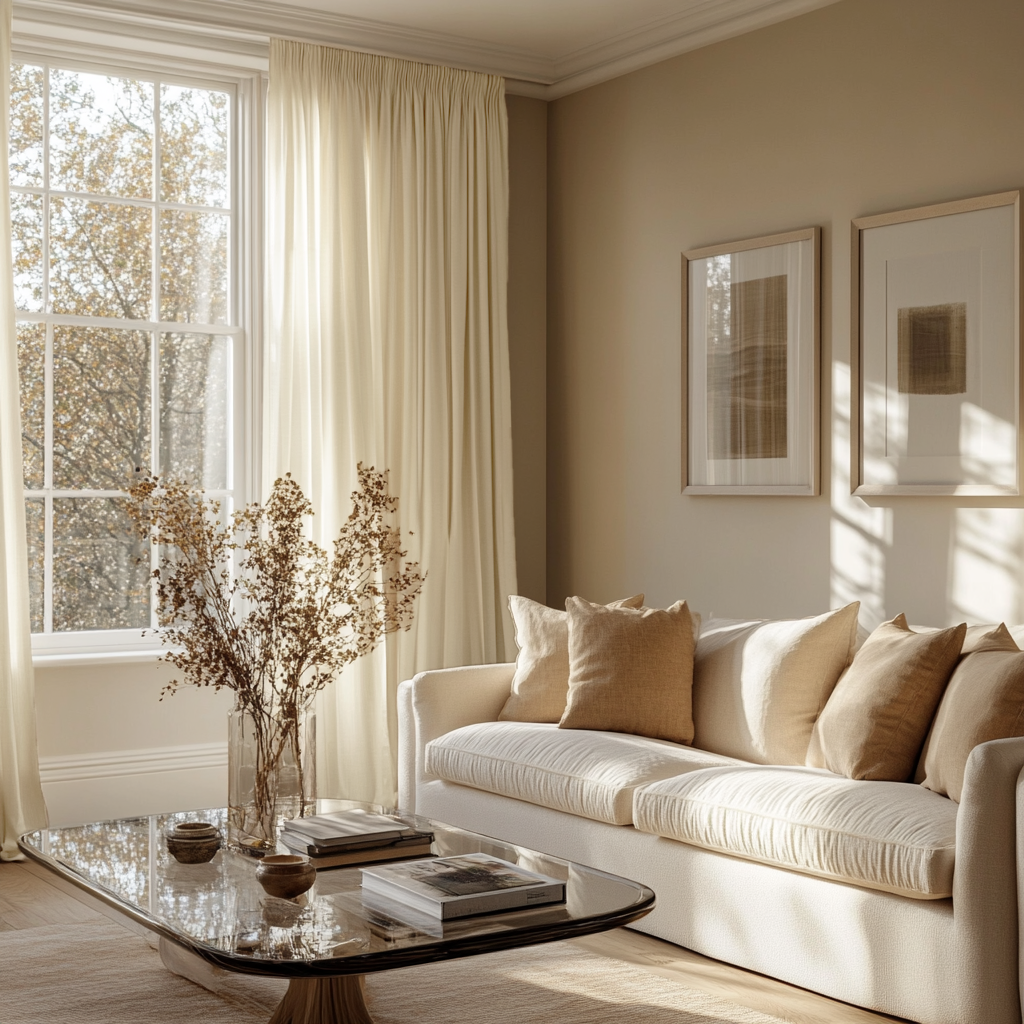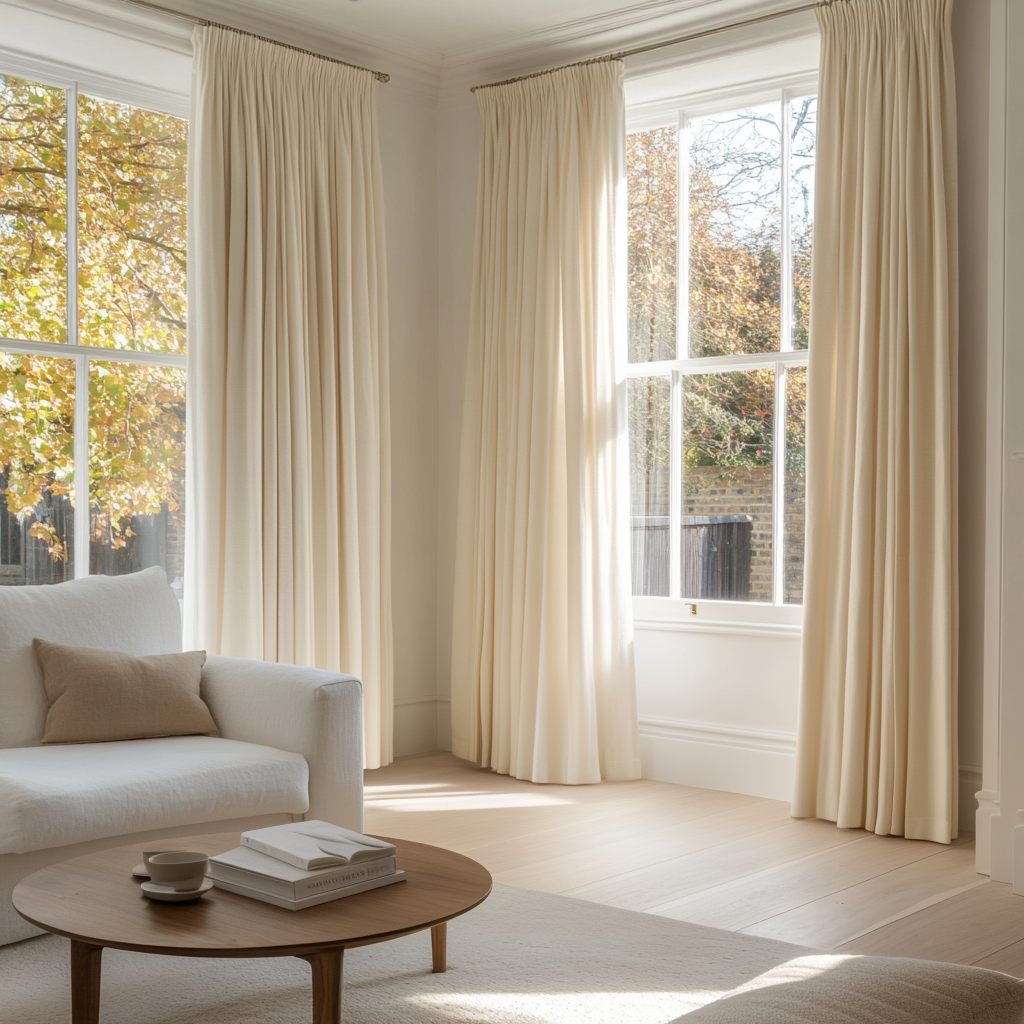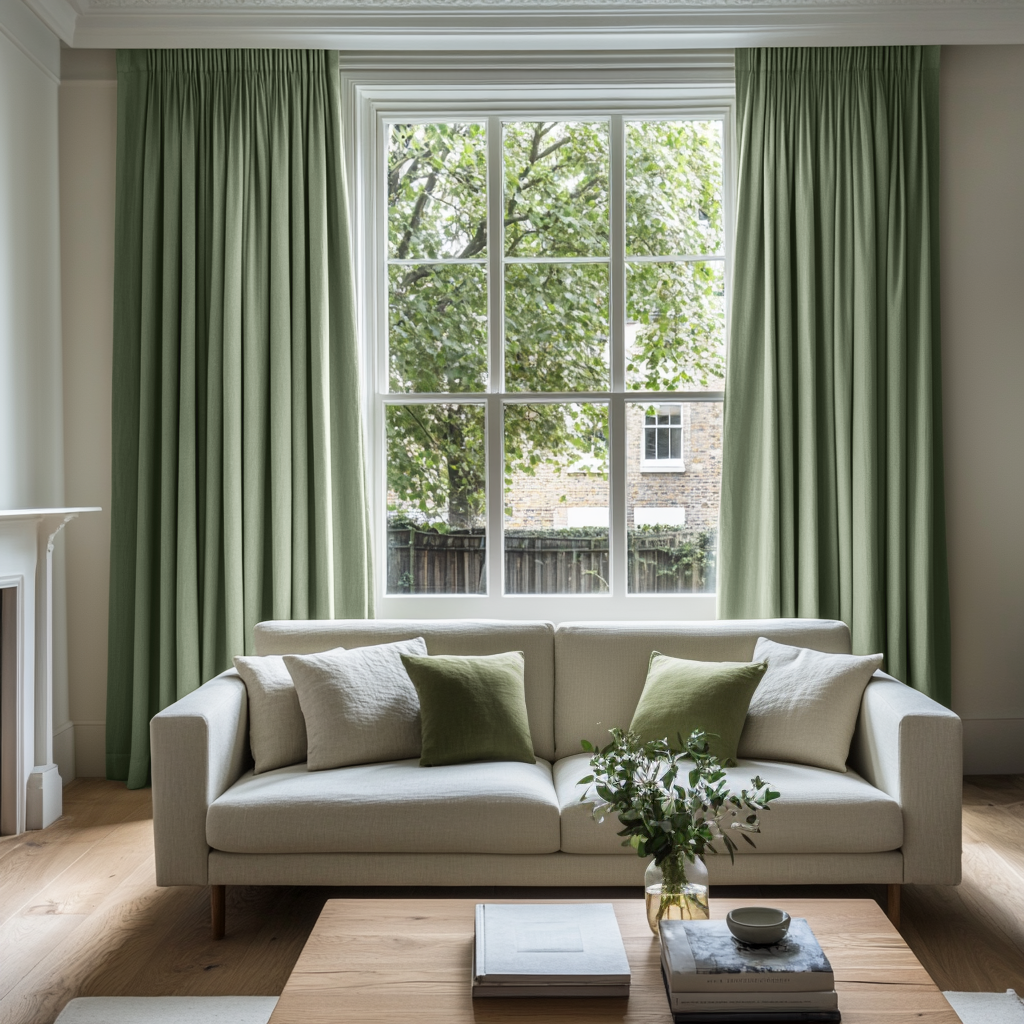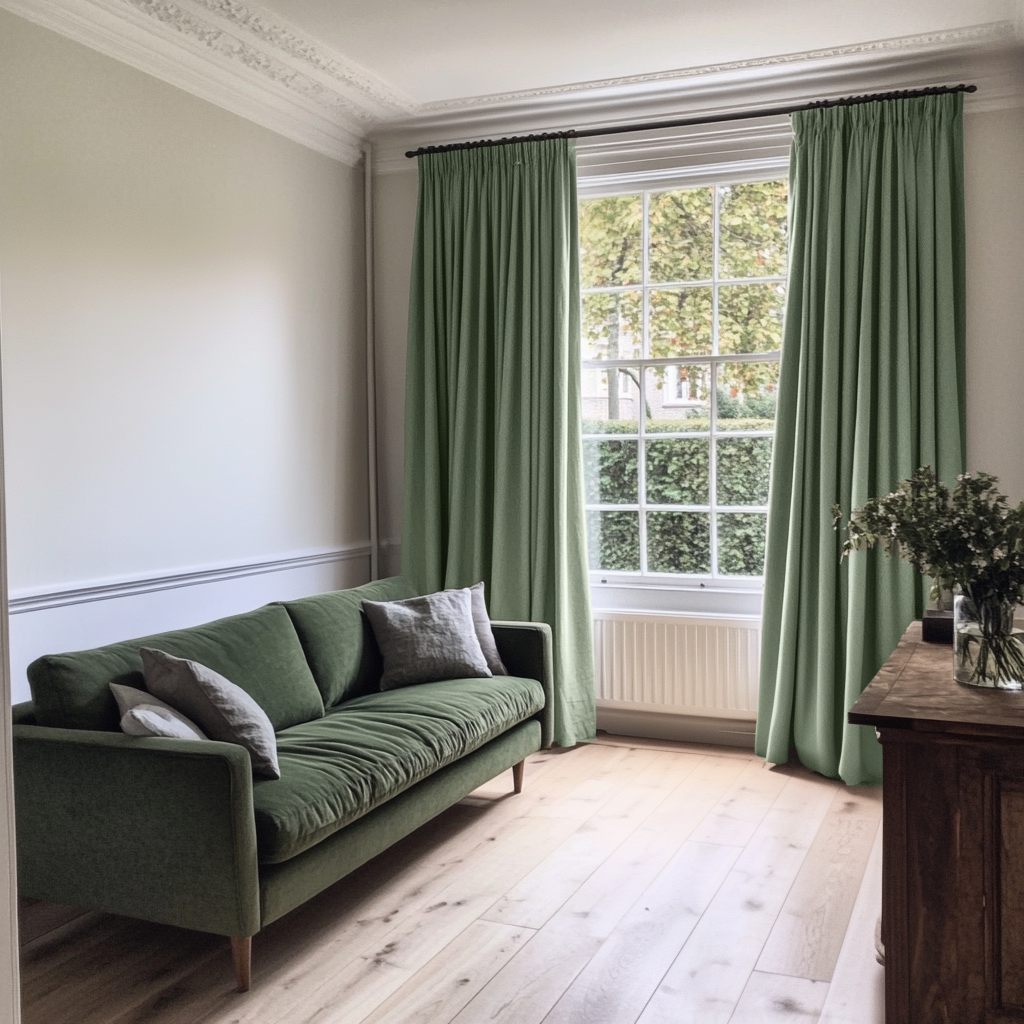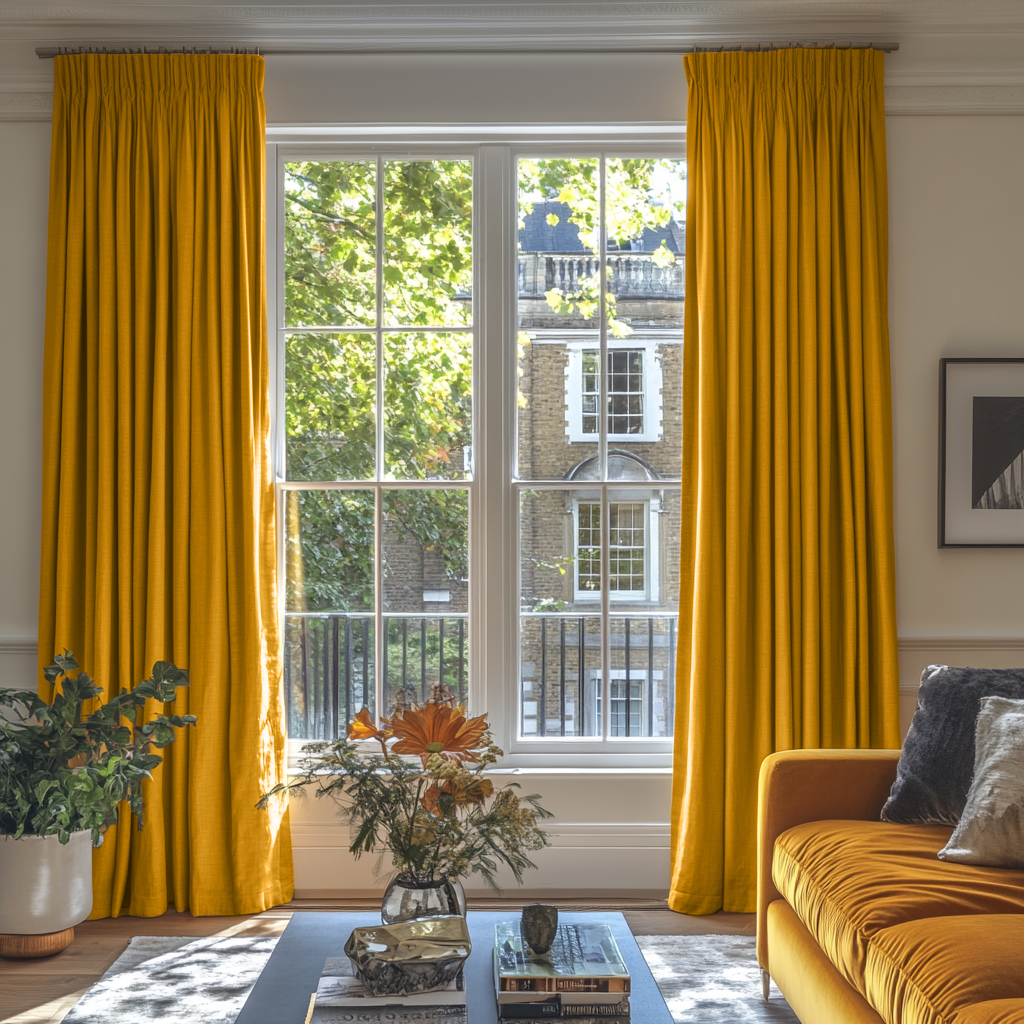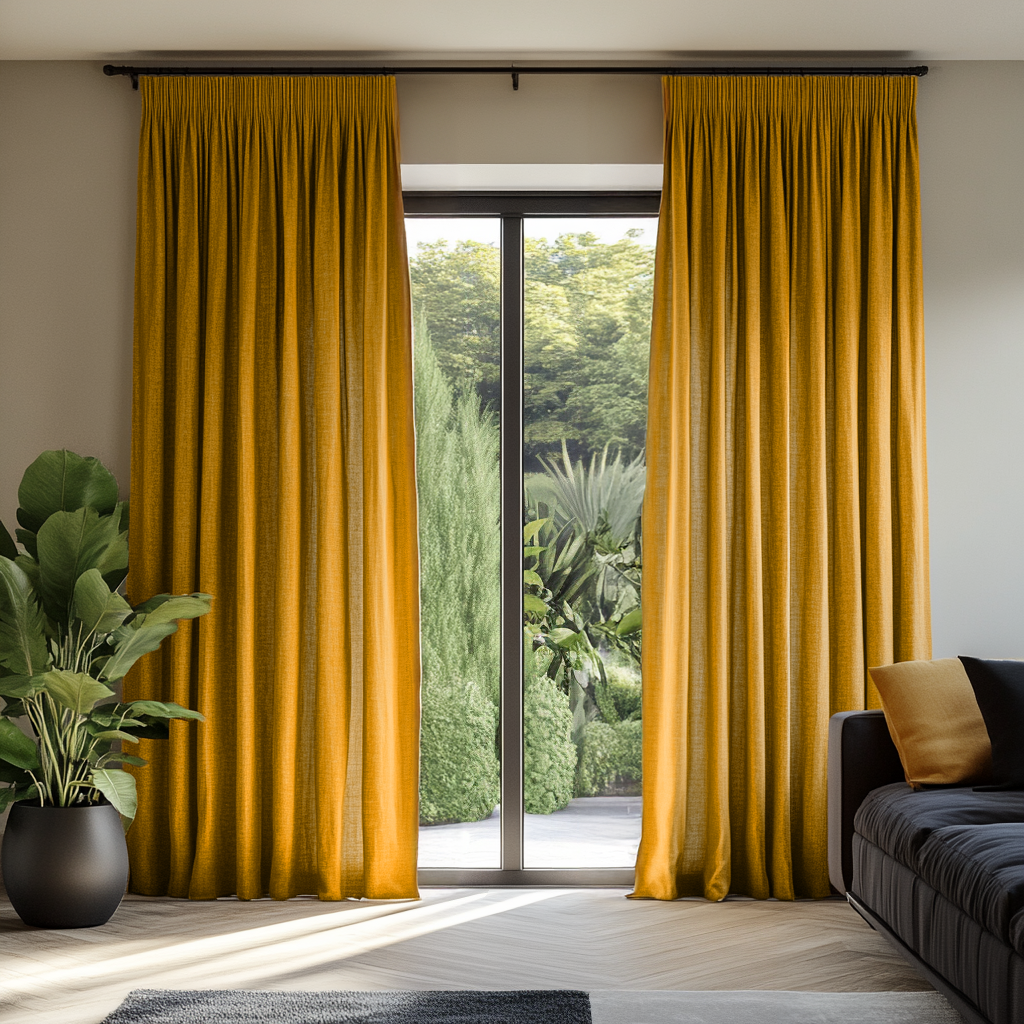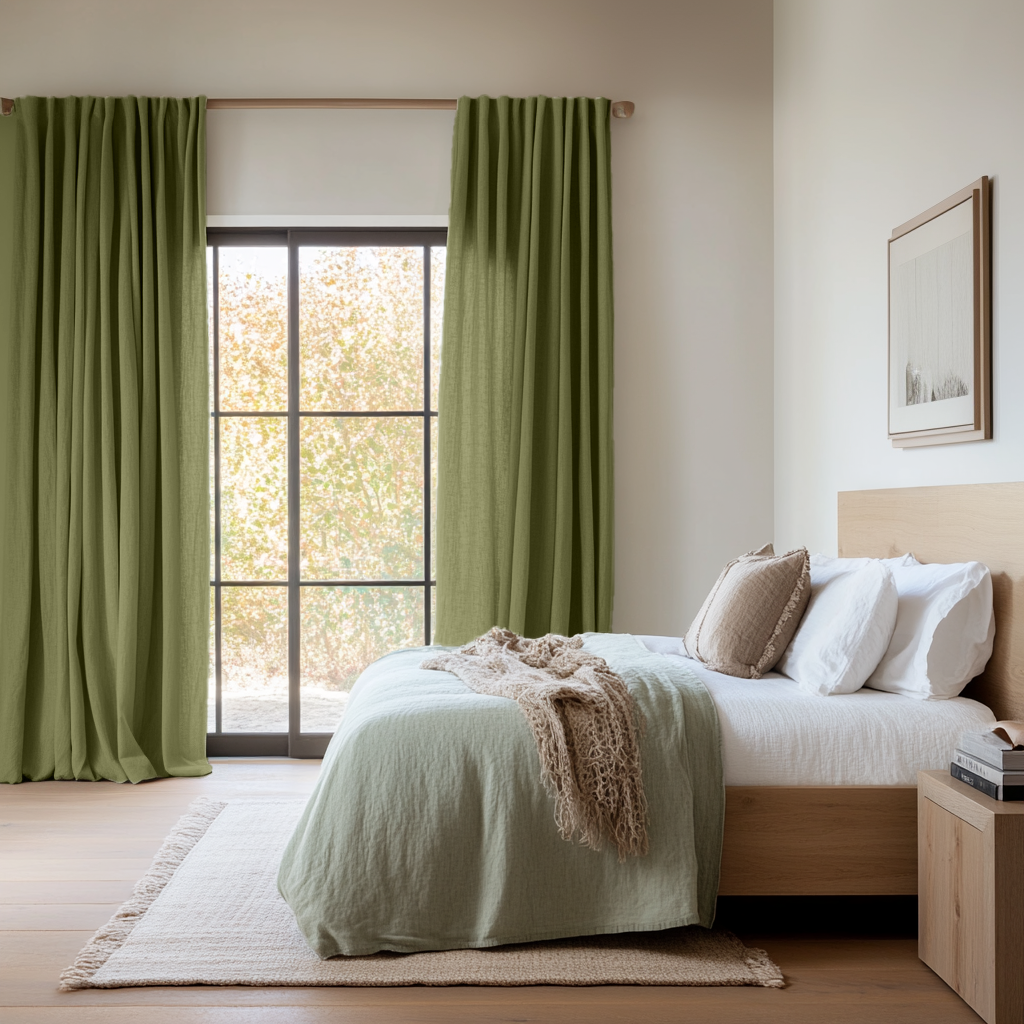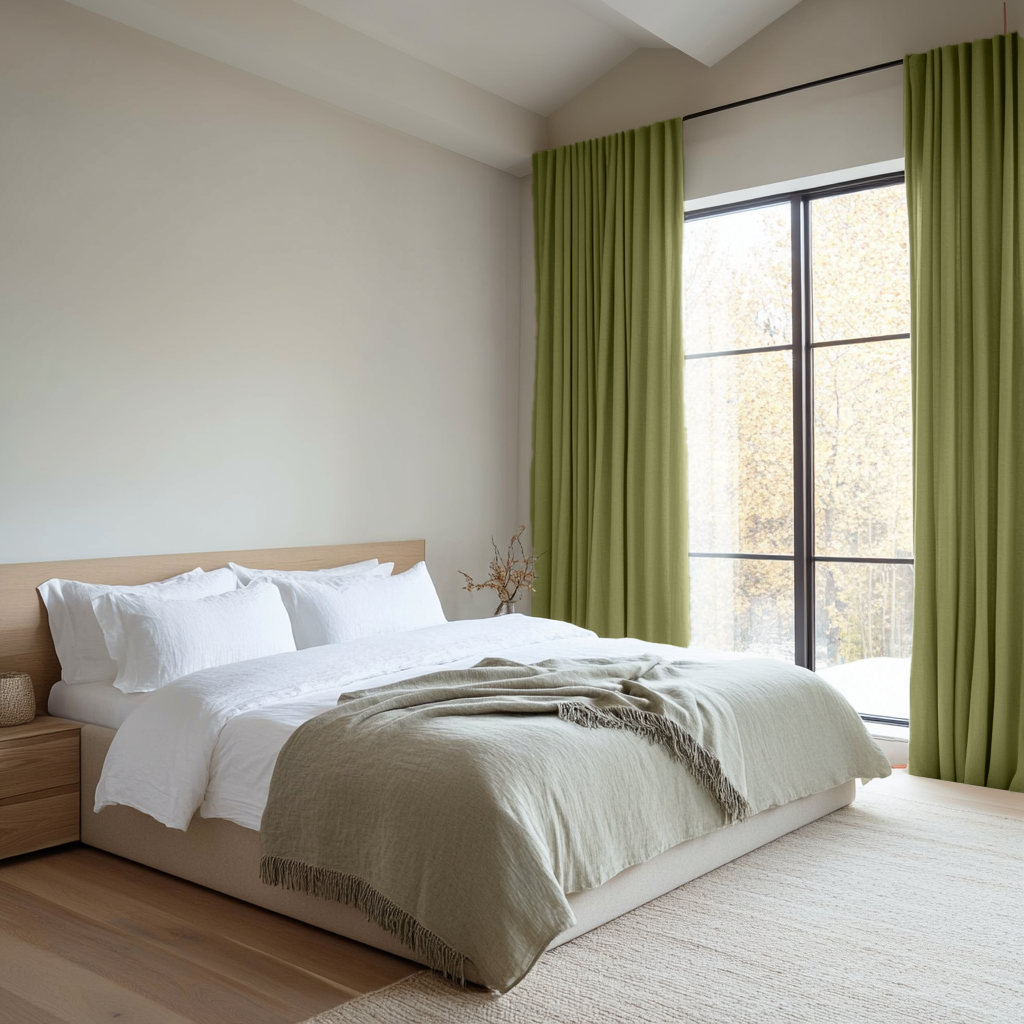Do Blackout Curtains Really Work?
Yes, blackout curtains do work and are quite effective, particularly in blocking out light. For Australians, blackout curtains can be especially useful due to the intense sunlight and heat experienced in many parts of the country. Here are some key points about how blackout curtains function and their benefits:
- Light Blocking: Blackout curtains are designed with thicker and denser fabrics that block out light more effectively than regular curtains or blinds. Room darkening curtains are especially beneficial for those who need to sleep during the day, such as shift workers or individuals with irregular schedules. In Australia, where daylight can be strong and persistent even during colder months, blackout curtains can help create a darker environment conducive to sleep due to their shade. They can also facilitate a more comfortable environment within a store opening during the day.
- Heat Reduction: In addition to blocking light, heavier fabrics such as blackout curtains can also help insulate rooms, keeping them cooler in hot weather on account of their shade. These thermal insulated blockout curtains can be particularly useful in Australian summers when temperatures can soar, helping to reduce the need for air conditioning and potentially saving on energy costs within your store or home. Thermal insulated curtains can even help to prevent damage to wooden furniture.
- Privacy: Blackout curtains are assembled using tightly woven fabric that provides enhanced privacy by preventing people from seeing into your home from outside. This is especially relevant for Australians living in densely populated urban areas or those with windows facing busy streets where regular light filtering curtains are inadequate.
- UV Protection: Some blackout curtains are designed to block harmful UV rays, which can help protect furniture, carpets, and other furnishings from fading or damage caused by sun exposure. This is particularly important in Australia, where the sun's UV radiation is strong and the lack of acrylic coating on one’s curtain fabric can cause significant damage over time.
- Noise Reduction: While not their primary function, blackout curtains can also help reduce outside noise to some extent, providing a quieter and more peaceful environment indoors. These blockout curtains can be beneficial for Australians living in noisy urban areas or whose bedrooms face busy roads.
Overall, blackout curtains can be a valuable investment for Australians looking to improve their sleep quality, enhance privacy, and create a more comfortable living environment, especially in regions lacking shade due to strong sunlight and high temperatures. Purchasing and installing blackout curtains can even lead to a snowball effect on performance and quality of life.
What Is the Purpose of Blackout Curtains?
Certainly! Blackout curtains serve several important purposes:
- Blocking Light: The primary purpose of blackout curtains is to block out external light from entering a room utilizing its acrylic coating and heavier fabrics. This is particularly beneficial for those who require cool surroundings to sleep during the day, such as shift workers, or for creating a darker and quieter environment by blocking external noise for infants and young children to sleep in. Blocking light using blockout curtains can also diminish the glare with in store
- Temperature Regulation: Blackout curtains hanging near exposed windows can help regulate the temperature inside a room by blocking out sunlight and reducing heat gain during hot weather. In Australia, where temperatures can soar during the summer months, durable materials such as blackout curtains can contribute to keeping indoor spaces cooler and more comfortable for extended periods.
- Privacy: Blackout curtains hanging near windows provide enhanced privacy by preventing people from seeing into your living space from outside. This is especially important in densely populated areas or if your windows face busy streets or neighboring properties.
- UV Protection: Some blackout curtains are designed to block harmful UV rays and warmth from entering the room, helping to darken the room and hence protect furniture, flooring, and other belongings from fading or damage caused by sun exposure. This is particularly relevant in Australia, where the sun's UV radiation is strong and lighter fabric types and colours can cause significant damage over time.
- Noise Reduction: While not their primary function, blackout curtains can also help reduce outside noise to some extent, creating a quieter and more peaceful indoor environment. Blockout curtains can be beneficial for Australians living in dust filled noisy urban areas or near busy roads.
Overall, blackout curtains are versatile window treatments that offer Australians the following benefits including but not limited to improved sleep quality, temperature control, privacy, UV protection, and noise reduction. Blockout curtains are especially valuable in regions with strong sunlight and high temperatures, making blockout curtains a popular choice for homes across the country.
What Can I Use Instead of Blackout Curtains?
For Australians looking for alternatives to blackout curtains, there are several options to consider depending on your specific needs and preferences:
- Sheer Curtains with Liners: A sheer curtain can provide some privacy and light filtering during the day while still allowing natural light to enter the bedroom. Adding a separate liner or layer of fabric behind the sheer curtains can darken and enhance their light-blocking capabilities, although they may not be as effective as true blackout curtains.
- Blinds or Shades: Roller blinds, Roman shades, or cellular shades on a curtain rod can be effective at blocking light when fully closed. Throughout your search for alternatives, choose options with light-blocking or room-darkening features for better light control. However, keep in mind that unlike in a blockout curtain, some light may still seep through the edges or gaps between slats.
- Thick Drapes or Heavy Fabrics: Opting for thicker drapes or rod pocket curtains made from heavy fabrics like velvet or suede can provide better light-blocking properties compared to lighter materials. While the curtain fabric may not completely block out all light, it can significantly reduce glare and brightness.
- Window Films: Window films or tinting can be applied directly to the glass instead of room darkening curtains to reduce glare and UV rays without completely blocking out natural light. This option is ideal for maintaining a view while still enhancing privacy and reducing heat gain.
- DIY Solutions: If you're on a budget or looking for a temporary solution, instead of using thermal insulated curtains, you can get creative with DIY light-blocking techniques. For example, you can hang heavy blankets or quilts over your windows during the day, use aluminum foil to reflect sunlight or install temporary blackout liners behind existing curtains to cool the bedroom.
- Adjustable Awnings or Exterior Shades: Installing adjustable awnings or exterior shades outside your windows can help block direct sunlight before it enters your home or store, reducing heat gain and glare. This option is particularly effective for windows that lack room darkening curtains and receive direct sunlight for extended periods during the day hindering one’s sleep and rest.
Ultimately, the search for the best alternative to blackout curtains will depend on your specific needs, colours, fabric types, budget, and aesthetic preferences. Consider factors such as light-blocking capabilities, privacy requirements, and energy efficiency when choosing the right blockout curtains for your store or bedroom.
Do Blackout Curtains and light filtering curtains Block 100% of Light?
Blackout curtains are designed to block out a significant amount of light. The effectiveness of blackout curtains can vary depending on factors such as the quality of the curtains, the thickness and density of the curtain, the way they are installed on a curtain rod, and the amount of light seepage around the edges of the blockout curtain.
While high-quality tightly woven fabric in blackout curtains can substantially reduce incoming light, some minimal light may still penetrate through small gaps around the edges of the blockout curtains or through the fabric itself, especially if they are not properly installed or if the blockout curtains are of lower quality.
That said, blackout curtains are generally highly effective at creating a dark environment, particularly when combined with other light-blocking techniques such as using metal curtain rods that extend beyond the window frame or pairing them with blackout blinds or shades for added light control in the bedroom or store.
For Australians seeking complete darkness, it's essential to carefully select blackout curtains that are designed to provide maximum light-blocking capabilities and ensure they are installed correctly to fully utilize their features and minimize any potential light leakage.
What Color Should My Blackout Curtains Be?
The color of your blackout curtains can depend on various factors such as personal preference, room decor, room details, and the desired ambiance. Here are some considerations for Australians when choosing the color of blackout curtains:
- Light Absorption: Dark colors such as black, charcoal, navy, or dark brown are typically more effective at absorbing light and creating a darker environment within your bedroom or store. If your primary goal is to blockout as much light as possible, especially in sunny Australian climates, opting for darker-colored blockout curtains can be more effective.
- Heat Absorption: In regions with hot climates like Australia, darker-colored blockout curtains may absorb more heat from sunlight, potentially leading to increased room temperatures. If you're concerned about heat gain, particularly during the summer months, you might consider a lighter-colored blockout curtain such as white, beige, or light gray, that blocks and reflects more sunlight and helps keep the room cooler.
- Room Aesthetics: Consider the existing color scheme and decor of the room when choosing colors for your blockout curtains. You may want blackout curtains that complement or contrast with the wall color, furniture, and other elements in the room or store to achieve a cohesive look.
- Cleaning and Maintenance: Keep in mind that lighter-colored blockout curtains may show dirt, dust, and stains more easily than darker colors. If you prefer low-maintenance options or have concerns about cleanliness due to complicated vacuum schedules, darker-colored blockout curtains could be a more practical choice in dust-prone households.
- Personal Preference: Ultimately, the choice of curtain color comes down to personal preference and the atmosphere you want to create in your living space. Whether you prefer a cozy, intimate ambiance with darker blockout curtains or a bright, airy feel with lighter colors, select the curtain that best suits your style and preferences.
It's worth noting that some blackout curtains feature a light-colored exterior fabric with a darker lining, combining the benefits of light reflection with effective light blocking features. This dual-layer design within a blockout curtain can offer a versatile solution for your store or bedroom, achieving both darkness and thermal insulation without compromising on aesthetics. For the best results, pick blockout curtains that perfectly balance out one’s preferences with minimal compromise.
Do Blockout Curtains Need to Touch the Floor?
Blackout curtains do not necessarily need to touch the floor, but having the blockout curtain extend all the way to the floor can provide several benefits:
- Improved Light Blockage: When blackout curtains reach the floor, the blockout curtain creates a more complete seal around the window, minimizing the amount of light that can enter the room from the bottom, perfect for a mid-day sleep session. This can enhance the effectiveness of the blockout curtain in blocking out unwanted sunlight, especially during the early morning or late afternoon when sunlight may be lower on the horizon.
- Enhanced Privacy: Floor-length blackout curtains provide better privacy by covering the entire window area, preventing anyone from seeing into your home from outside. These blockout curtains are particularly important for ground-floor rooms or windows facing busy streets or neighboring properties.
- Aesthetics: Blockout Curtains that touch the floor can create a more polished and visually appealing look, giving the room or store a sense of height and elegance. This is especially true for a store with high ceilings, where floor-length blockout curtains can help accentuate the vertical space and make the room feel more spacious and less crowded with furniture.
- Draft Prevention: Floor-length blockout curtains can also help prevent drafts or cold air from entering the room through gaps between the bottom of the curtains and the floor. Such blocks can contribute to better insulation and energy efficiency, particularly in colder climates or during the winter months. However, floor-length blockout curtains can hinder air cycles within poorly ventilated rooms, therefore it’s important to take the room’s layout into account.
However, if floor-length light filtering curtains are not practical or preferred, shorter blockout curtains can still provide effective light blocking and privacy, especially when combined with other light-blocking techniques such as properly fitted metal curtain rods, tight closures, or additional window treatments. Ultimately, the decision whether to have blackout curtains touch the floor depends on individual preferences, room layout, details, amount of furniture and specific needs.



































